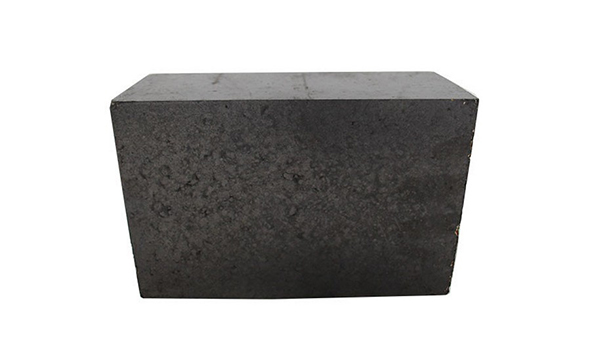Magnesia Carbon Brick: A High-Performance Refractory Solution
Magnesia carbon bricks are widely recognized as one of the most reliable and efficient refractory materials used in various high-temperature applications. Combining the properties of magnesia and carbon, these bricks offer exceptional resistance to thermal shock, slag corrosion, and mechanical wear. In this article, we will explore the composition, manufacturing process, applications, and advantages of magnesia carbon bricks, highlighting their importance in different industries.
1. Introduction to Magnesia Carbon Brick
Magnesia carbon brick, also known as MgO-C brick, is a refractory material that combines magnesia (MgO) and carbon (C) to form a highly durable and heat-resistant product. It is composed of high-purity magnesia, graphite, and various carbonaceous binders. The unique combination of these materials imparts excellent thermal stability, corrosion resistance, and mechanical strength to the brick.
2. Composition and Manufacturing Process
Magnesia carbon bricks consist of approximately 70-90% magnesia and 10-30% carbon. The carbon content can vary depending on the specific application requirements. The manufacturing process involves mixing the raw materials, shaping the mixture into bricks, and then subjecting them to a high-temperature firing process. During firing, the carbon undergoes a controlled oxidation reaction, forming a network of interconnected graphite phases within the magnesia matrix.
3. Properties of Magnesia Carbon Brick
Magnesia carbon bricks possess several key properties that make them highly suitable for demanding environments:
3.1 High Thermal Stability
Magnesia carbon bricks exhibit exceptional thermal stability, allowing them to withstand extreme temperatures without significant degradation. This property is crucial in industries such as steelmaking, where the bricks are exposed to intense heat in blast furnaces and ladles.
3.2 Excellent Corrosion Resistance
Due to the presence of carbon, these MgO-C brick offer superior resistance to slag corrosion, acidic and basic environments, and chemical reactions. The carbon acts as a protective barrier, preventing the erosion and penetration of corrosive agents into the brick structure.
3.3 Superior Mechanical Strength
The addition of carbon improves the mechanical strength and abrasion resistance of magnesia carbon bricks. They can endure mechanical stresses, vibrations, and thermal cycling, making them ideal for applications that involve high mechanical loads.

4. Applications of Magnesia Carbon Brick
Magnesia carbon bricks find extensive usage in various industries, including:
4.1 Steel Industry
In the steel industry, magnesia carbon bricks are employed in converters, electric arc furnaces, ladles, and tundishes. They provide effective lining solutions that can withstand the rigorous conditions of steel production, ensuring optimal performance and longer service life.
4.2 Non-Ferrous Metal Industry
Magnesia carbon bricks are also utilized in non-ferrous metal applications, such as copper smelting and refining. They are well-suited for lining converters, anode furnaces, and other equipment that comes into contact with molten metals.
4.3 Cement Industry
In the cement industry, magnesia carbon bricks are used in the transition zone and burning zone of rotary kilns. They withstand high temperatures and chemical attacks from clinker, ensuring reliable and efficient operation of the kiln.
4.4 Other Applications
Additionally, magnesia carbon bricks find applications in industries like glass manufacturing, petrochemicals, and waste incineration, where their exceptional properties are harnessed for insulation, thermal containment, and chemical resistance.
5. Advantages of Using Magnesia Carbon Brick
The utilization of magnesia carbon bricks offers numerous advantages:
5.1 Extended Service Life
Magnesia carbon bricks have a longer service life compared to conventional refractory materials. Their resistance to thermal shocks and corrosion ensures prolonged durability, resulting in reduced maintenance and replacement costs.
5.2 Increased Efficiency
The superior thermal stability of magnesia carbon bricks enables efficient heat transfer and retention. This improves the energy efficiency of industrial processes, leading to cost savings and environmental benefits.
5.3 Enhanced Performance
With their high mechanical strength and wear resistance, magnesia carbon bricks contribute to enhanced performance and productivity in high-temperature applications. They minimize downtime and maintain operational continuity.
6. Conclusion
Magnesia carbon bricks are a vital component in various industries that require reliable refractory materials. Their unique combination of magnesia and carbon offers exceptional resistance to thermal shock, slag corrosion, and mechanical wear. With extended service life, increased efficiency, and enhanced performance, magnesia carbon bricks provide a cost-effective and sustainable solution for high-temperature applications.
FAQs
Q1: Are magnesia carbon bricks suitable for use in blast furnaces?
Yes, magnesia carbon bricks are widely used in blast furnaces due to their excellent thermal stability and resistance to slag corrosion.
Q2: Can magnesia carbon bricks withstand high mechanical loads?
Yes, the addition of carbon enhances the mechanical strength and abrasion resistance of magnesia carbon bricks, making them suitable for applications involving high mechanical loads.
Q3: What is the carbon content in magnesia carbon bricks?
The carbon content in magnesia carbon bricks typically ranges from 10% to 30%, depending on the specific application requirements.
Q4: Do magnesia carbon bricks find applications outside of the steel industry?
Yes, magnesia carbon bricks are used in various industries, including non-ferrous metal production, cement manufacturing, glassmaking, and petrochemicals.
Q5: How do magnesia carbon bricks contribute to energy efficiency?
Magnesia carbon bricks' superior thermal stability enables efficient heat transfer and retention, leading to improved energy efficiency in industrial processes.
In conclusion, magnesia carbon bricks play a critical role in providing high-performance refractory solutions for industries operating at high temperatures. Their unique properties make them a reliable choice, offering extended service life, increased efficiency, and enhanced performance. Whether in steelmaking, non-ferrous metal production, or cement manufacturing, magnesia carbon bricks deliver exceptional results, making them an indispensable component in various industrial applications.



